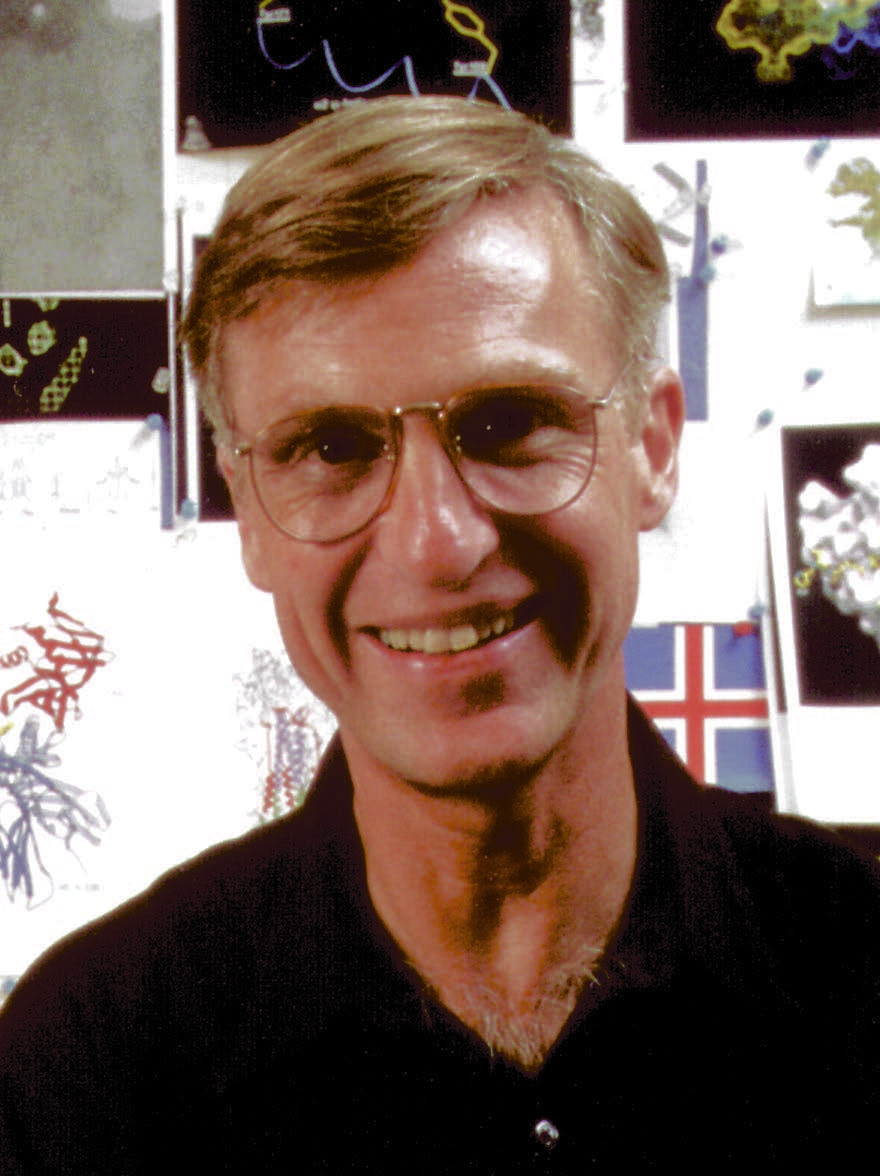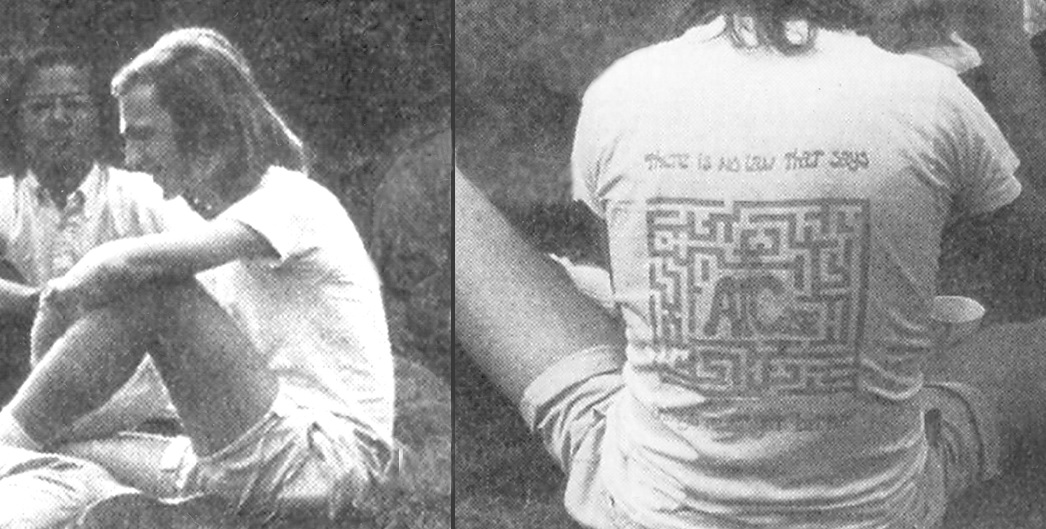- History Home
- People, Leadership & Service
- A Legacy of Excellence
- History & Impact
- Meetings Through the Years
- Resources
Obituary - Don C. Wiley (1944 - 2001)Obituary | Publications | Curriculum Vitae | Videos | Slides | Articles
Don C. Wiley (1944 - 2001)
The crystallographic world suffered a huge loss with the untimely death of Don Wiley, who disappeared mysteriously from Memphis on 15 November 2001 to be found weeks later downstream in the Mississippi river. This tragedy is felt acutely by his family and immediate associates; but the pain spreads to us who knew Don less directly and on to many others who understand biology better because of him. Don drew fame from his impact in biology, but his drive to solve central problems in biology had an under-appreciated influence on crystallography as well. As best I can recall, I first met Don in the summer of 1971 at a Cold Spring Harbor Symposium. This was a watershed meeting held just as macromolecular crystallography was reaching its stride. Don was there to present his thesis work with Bill Lipscomb on the 5.5Å structure of aspartate transcarbamylase (ATCase), and this lanky, long-haired young man cut a striking figure. Expressing familiar graduate-student anxiety, he sported a purpose-made T-shirt featuring his subject, ATCase, ensnared in the blind alleys of a maze and labeled “There is no law that says ... things must get better.” Indeed, it was left to successors in Lipscomb’s laboratory to find the way out to atomic-level resolution and to show the basis for allosteric regulation in this classic enzyme. At least for me, however, Wiley had already left a mark with his first paper. In elegant crystallographic reasoning he deduced the molecular symmetry of ATCase (published with Lipscomb in Nature, as were so many to follow). He crystallized this oligomeric protein in two lattices for which he determined crystal densities; one was found to have a third of the molecule in the asymmetric unit of a trigonal space group and the other to have half in the asymmetric unit of a tetragonal space group. The minimal (and ultimately correct) point-group symmetry of ATCase was deduced thereby to be D3 (32). I use this example in my crystallography course to this day. I next recall encountering Wiley a few years later at a protein crystallography conference in the Berkshires. Don talked about the beginnings of his work with John Skehel on influenza virus, giving one of his patently lucid descriptions of complicated biology. Wiley had realized ahead of other crystallographers that extra-membranous fragments of membrane proteins could be tractable and was able to crystallize the exterior portion of flu hemagglutinin. In later solving this structure, he and Ian Wilson used three-fold averaging to resolve the phasing from a single derivative. This work provided a highly influential demonstration of the power of non-crystallographic symmetry. The structure itself was also a marvel, recapitulating the tall and slender form of its discoverer; and hemagglutinin proved all the more remarkable when the structure as transformed to its low-pH state came out some years afterward. This dramatic conformational change continues to provide a mechanistic paradigm for cellular entry by HIV and other fusogenic viruses. In membrane ectodomain encores, Wiley subsequently tackled surface glycoproteins from trypanosomes and major histocompatibility complex (MHC) molecules from antigen-presenting cells. He was highly decorated for the latter work, winning both a Lasker Award and the Japan Prize with his collaborating colleague Jack Strominger. I remember learning about this fascinating problem from Pam Bjorkman at her Gordon Conference poster describing packing in Class I MHC crystals, and when her structure appeared I was awestruck by its message -- an ‘Aha’ structure if ever I saw one. Soon afterward, I was asked by a colleague to help him study aspects of peptide presentation by MHC molecules and to present our results at a meeting of prominent molecular immunologists. On reading background literature, I learned that much was already known ahead of Wiley’s work and feared that I had misjudged the impact of the structure. My first impressions were reinforced resoundingly at the meeting, however; nearly every talk featured a picture of the Class I structure with its ‘extra density’ assigned to antigen peptides. Wiley continued to attack important problems in molecular immunology and virology. The list is long: envelope glycoproteins from HIV, herpes and Ebola viruses as well as other hemagglutin variants; Class II MHC molecules, T-cell receptors, Natural Killer (NK) receptors, various peptide processing factors, and so on. The problems that he chose often posed technical challenges. Technology often develops best when driven by such challenges, and the crystallographic problems in Wiley’s laboratory motivated new instruments and techniques. Thus, Wiley together with his close colleague Steve Harrison fostered the building of a new electronic area detector and already had a prototype in use for the Class I MHC structure (1987) to complement synchrotron data from extremely thin crystals (also non-standard at the time). In further development of the in-house detector system, crystal freezing was introduced. This proved to be essential in extending the trypanosomal surface protein structure to an atomic-level (1990), and cryoprotection technology was then perfected into a routine tool for other radiation-sensitive problems at Harvard and ultimately around the world.
Cold Spring Harbor Symposium -- Summer 1971 Don was an undergraduate in physics and chemistry at Tufts University and earned his Ph.D. in Biophysics at Harvard University (with Lipscomb in 1971) after which he immediately joined the faculty of the Department of Biochemistry and Molecular Biology at Harvard, where he spent his entire career apart from a sabbatical year in England. In 1987 he became an Investigator with the Howard Hughes Medical Institute and in 1990 he also became associated with Children’s Hospital in Boston. He was a member of the National Academy of Science and the American Philosophical Society and a fellow of the American Academy of Arts and Sciences. He was recognized by other major honors including the Louisa Gross Horwitz Prize and the Gairdner Award as well as the Lasker Award and Japan Prize noted above. Don is survived by his wife Katrin and their two children and by two children from a previous marriage. My admiration for Don Wiley and his scientific accomplishments is immense. He used structure to define biology when others were content just to see structures. He focused on the truly important and derived stirring insights from his studies; but he had the intellectual discipline to stay within the bounds of his data. His results have redefined whole fields. His lectures were paragons of clarity. He was the life of the party. We miss him sorely. Wayne A. Hendrickson
|


